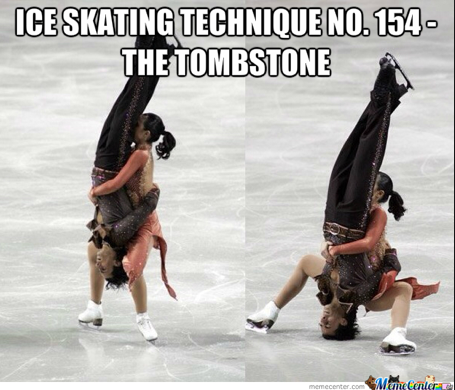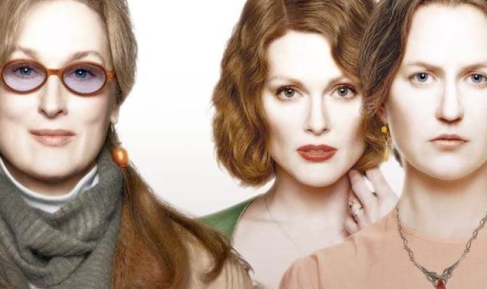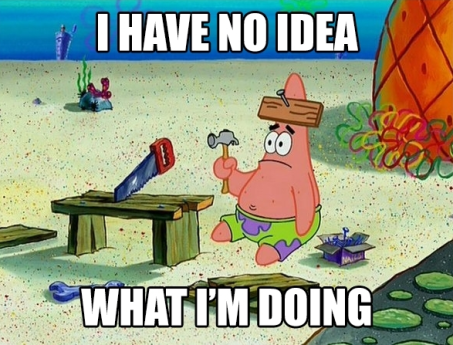Understanding the Flashback—Bending Time as a Literary Device

Image vis Flickr Creative Commons, courtesy of Yuya Sekiguchi.
Last time we talked about flashbacks and why they ruin fiction. But, because this is a blog and I don’t want it to be 20,000 words long, I can’t address everything in one post. Today, we’re going to further unpack “the flashback.” I think we tend to use broad literary terms to encompass a lot of things that aren’t precisely the same things, and in doing this, we get confused.
In my POV, the term “flashback” is far too broad.
We can mistakenly believe that any time an author shifts time, that THIS is the dreaded “flashback” I am referring to and the one I (as an editor) will cut.
Not necessarily.
We need to broaden our understanding of the “flashback” because lumping every backwards shift in time under one umbrella won’t work.
My favorite example is the term “antagonist.” I’ve even been to conferences where experts used the terms “antagonist” and “villain” interchangeably as if they were synonyms, which is not the case. A villain is only one type of antagonist. It creates a false syllogism. Yes, all oranges villains are fruits antagonists, but not all fruits antagonists are oranges villains.
Ergo, why I coined the term, Big Boss Troublemaker.
By being specific in the language, plotting becomes far simpler because we aren’t struggling to have a “villain” in every scene. This also helps us understand the structure of stories where there is no cut-and-dry “bad guy.” I.e. Jane Eyre, Joy Luck Club, The Road.
Back to “flashbacks.” Let’s try to do the same thing so we have some clarity.
I will modify what I said on Friday, since I was a tad unclear (but it was okay for the purposes of that lesson). I believe in NO flashbacks EVER…in the first pages of the book. Since the example I used was from a previous First Five Pages class, it fell under this “rule” of mine.
My reason is this. The first pages of our book are some of the most critical. We need to stick to ONE timeline long enough to hook a potential reader into the story and allow them to get grounded and care. If we bounce forward and backward, with a new time and new cast members and a new setting? Readers will get confused and likely put the book down.
So, the NO FLASHBACKS EVER still applies for the first pages. As writers, we have the task of being magicians. We spin a fictive dream out of black letters on a white page. Once we have readers hooked, our job is to maintain that fictive dream.
Every shift in time is an opportunity to shatter that magic.
Think of writing a novel like being a figure skater in a performance. Sure, figure skating is already hard. The skater might stumble in a spin or meet a wall, but usually those aren’t the high danger spots. We can tell the trickiest parts of any ice skating performance by how they are scored. What is the make or break? Jumps. The more complicated (and dangerous) the jump, the more points.
We can add “lifts” in couples skating, but the idea the same.
But jumps are a gamble. Nail the jump and WIN! Botch the jump and maybe it costs more points than it could have gained. Or, worst-case-scenario, the jump was so dangerous, the resulting injury is a career-ender.

Um…OUCH!
Every time those skates leave the ice is dangerous, because one tiny mistake can ruin the magic. When we decide to shift time (jump), our literary skates are leaving the ice, so execution becomes paramount to keep the performance seamless.
Also, what new skater is doing a routine filled with ten quadruple Lutz jumps? Probably won’t find many Olympians doing that either ;) .
Now you see why I want you to use jumps sparingly. Also, if we are going to jump, we better know how to execute it lest we destroy a knee our story. Jumps are also blended into a fabric of a larger performance and serve the whole or we would be left with ice-jumping as a sport.
To continue with our ice skating analogy, all jumps are jumps, but they each are different types of jump and each has a varying degree of difficulty worth a corresponding amount of points. A Salchow Jump and a Flip-Jump are both jumps, but with very different execution. Within each category of jump, there are differences as well. A single-axel jump is obviously different from a quadruple-axel jump.
The same idea applies to “flashbacks.” Yes, broadly speaking, all “going back in time” is a flashback. But there are different ways of going back in time. And, within each “way” of going back in time, there is a corresponding level of difficulty (and possible payoff).
Also, some of you may have more than one time-line and more than one “protagonist” and that can and has been done, but remember that jumps now reach a new height of difficulty. Because we are balancing partners, timing must be perfect and if one partner stumbles, it brings down everyone.
Before we talk about time as a device…
The Training Wheel Flashback
The training-wheel flashbacks are the ones we should learn to nix right away. It is weak writing. This type of flashback does what training wheels do. They artificially “prop” up the weak plot and weak characterization.
Most of us start with training wheels. It is OKAY to be new. But eventually, we look rather silly.
When I wrote my first “novel”, I had two protagonists with parallel plots. Okay. More than a tad difficult for a first-timer, but all righty. But THEN, I kept feeling the need to go back and explain. How did they become friends? How did the one character develop such bad OCD she became agoraphobic? Etc.
Thing is, I had no plot. But, even if I did have a plot, these were elements I didn’t need to go back in time and explain. They were friends. I am Author God and if I say they are friends, the reader accepts that.
The one character was OCD. That was all I needed. She was just OCD. That’s all. There was nothing in those flashbacks that couldn’t have been related current-time in narrative or dialogue. I didn’t need to hop in a Literary DeLorean and explain by detailing her abusive childhood.
In fact, had I not explained why she was OCD and agoraphobic, I might have maintained/increased tension because the reader would have hoped I might reveal WHY.
Flipping back and forth in time added way too many characters, places and problems that had nothing to do with the current story problem in need of resolution.
When I took hostages asked friends and family to read my novel, the largest complaint was I confused everyone. They had no clue what my story was about (namely because I didn’t know either). I’d strung together a bunch of beautifully written vignettes all across time, propped up with training wheels flashbacks.
Ah, but pretty prose does not a story make.
Yes, flashbacks are a real literary device. I will add a caveat that deus ex machina is also legitimate literary device that was used by the great Greek writers. Today? Readers would rightfully toss our book across the room, because deus ex machina is viewed as a cheap trick to get out of a plot problem where we the writer have painted ourselves in a corner. So, just because something is a real literary device doesn’t mean it will work in modern commercial fiction.
But, YES, shifting in time is something that can be and is done. It might be a parallel timeline (Fried Green Tomatoes, The Notebook, True Detective).
It can be non-linear structure (Memento, Vanilla Skies).
It can even be a true flashback that is critical to the current story problem. For instance, an event that happened earlier that directly relates to solving/conquering the real-time story problem that won’t work in a prologue.
We’ll explore all of these and ways they’ve been done well.
But, before we talk about bending time, let’s look at the inherent pitfalls to time travel (even when we do it well).
Bending Time

Back to the future, then past then future…
There are a lot of ways to bend time. But, like the quadruple axel, there are risks. Bending time is part of our author toolbox. There is nothing saying all stories MUST go from Point A to Point B in a linear, chronological fashion.
This said, we need to be careful how much we bend time and why we are bending time. Remember that every time we shift time, we can lose members of our audience. Yes, a handful of film geeks loved Memento.
But, Memento is one of those movies that can probably only be done ONCE.
Pulp Fiction did a fabulous job of hopping all over time, but just as many people who loved the movie hated the movie and couldn’t finish. Same with The English Patient and The Hours.

From the Oscar Award Winning Film, “The Hours”
We have to remember that, ultimately, stories are for the audience not for us (unless we are happy selling a book to ourselves). What experience are we giving them? Are we killing our tension and momentum because we keep jerking the reader back into a past that has no purpose other than exposition?
One of the reasons I play the Flashback Dictator, is that if I pull the training wheels away and help you learn to NOT rely on them, your writing will improve. THEN, if you do decide you must shift in time, you will be careful to do it with intention and will execute it WELL.
Instead of wobbling all over, any time shift has purpose.
A good litmus? The PAST must be related to what is going on in the PRESENT and directly impact the FUTURE (how the story is resolved).
Some questions we might ask when tempted to go back in time.
Is this something that can be explained real-time?
For instance, in the series True Detective (which we will use later), the story follows two detectives who do NOT get along. The more amiable detective is trying to get to know his tortured and gloomy partner.
Detective Marty Hart: Your mom alive?
Detective Rust Cohle: Maybe.
Just this line of dialogue speaks VOLUMES. Of course later, Cohle explains in a few lines of dialogue that his father returned from fighting in Vietnam when he was two. Mom couldn’t take it and left and he hadn’t seen her since. We didn’t need to go BACK there because Cohle’s family problems, him being abandoned as a toddler and resulting relationship with his dad, has nothing to do with the current PLOT problem…finding a brutal killer.
If I cut the flashback, does it really harm the story?
If you have beta readers, critique partners or an editor, try removing any scenes that “go back” and often they aren’t as critical as we believe. Maybe one or two we need to keep, but I guarantee most can be weeded out (unless this is non-linear plotting).
Have I started in the wrong spot? Am I telling the “right” story?
Sometimes when we get writing, our subconscious knows that the more interesting story actually happened earlier, which is why we keep going back. Often, changing WHEN the story begins helps.
Have I unintentionally smooshed TWO separate stories together?
IF we keep flipping back and forth, we might also be muddying two separate stories together. It might be we need to separate the timelines and give each story a separate stage.
Remember, the PAST must be related to what is going on in the PRESENT and directly impact the FUTURE (how the story is resolved). From Pulp Fiction to The English Patient to The Hours past and present are tethered and eventually the timelines converge and empty into the same gulf.
If we look and realize one timeline is going one way and another is going a different way and end in different places? A good time to cut in half and have two books ;) .
I hope this helps you guys understand the difference between the “bad” flashback and simply using time as a literary device. We will explore the ways we can bend time some more and I will work to give you tips for how to land that quadruple-axel without taking out a small village.
What are your thoughts? Do you struggle with movies or novels that bounce all over time? Have you struggled with shifting in time and maybe you were telling the wrong story or beginning in the wrong spot? Have any questions?
Classes:
Before we go, y’all asked for it so here goes. I have two classes coming up. The class on log-lines Your Story in a Sentence—Crafting Your Log-Line is $35 and as a BONUS, the first ten sign-ups get to be victims. IF YOU ARE QUERYING AN AGENT, YOU NEED A PITCH. I will pull apart and torture your log-line until it is agent-ready for FREE.
Beyond the first ten folks? We will work out something super affordable as a bonus for being in the class so don’t fret. I’ll take good care of you. AND, it is two hours and on a Saturday (June 27th) and recorded so no excuses :P .
I am also running Hooking the Reader–Your First Five Pages. Class is on June 30th so let’s make Tuesdays interesting. General Admission is $40 and Gold Level is $55 but with Gold Level, you get the class, the recording and I look at your first five and give detailed edit.
Our first five pages are essential for trying to attract an agent or even selling BOOKS. Readers give us a page…maybe five. Can we hook them enough to part with cold hard CASH? Also, I can generally tell all bad habits in 5 pages so probably can save you a ton in content edit.
I LOVE hearing from you!
To prove it and show my love, for the month of JUNE, everyone who leaves a comment I will put your name in a hat. If you comment and link back to my blog on your blog, you get your name in the hat twice. What do you win? The unvarnished truth from yours truly. I will pick a winner once a month and it will be a critique of the first 20 pages of your novel, or your query letter, or your synopsis (5 pages or less).
Remember, for MORE chances to win and better ODDS, also comment over at Dojo Diva. I am blogging for my home dojo and it will help the blog gain traction.
For those who need help building a platform and keeping it SIMPLE, pick up a copy of my latest social media/branding book Rise of the Machines—Human Authors in a Digital World on AMAZON, iBooks, or Nook.







